Scotland’s Isle of Skye isn’t just another pretty face in the Scottish Highlands — it’s a place where ancient legends meet jaw-dropping landscapes, and every turn in the road reveals something that’ll make you want to pull over and stare. This rugged island off Scotland’s west coast has been capturing hearts for centuries, from Viking raiders to modern-day adventurers with Instagram accounts. Whether you’re chasing waterfalls, exploring medieval castles, or simply trying to pronounce ‘Sgurr’ correctly, Skye delivers experiences that stick with you long after you’ve left.
The island manages to pack an incredible variety of activities into its 639 square miles, making it feel like nature’s own theme park — except the rides are real mountains and the entertainment comes courtesy of some seriously dramatic weather. Here’s a list of 16 things to do that’ll help you make the most of your time on this magical Scottish island.
Old Man of Storr
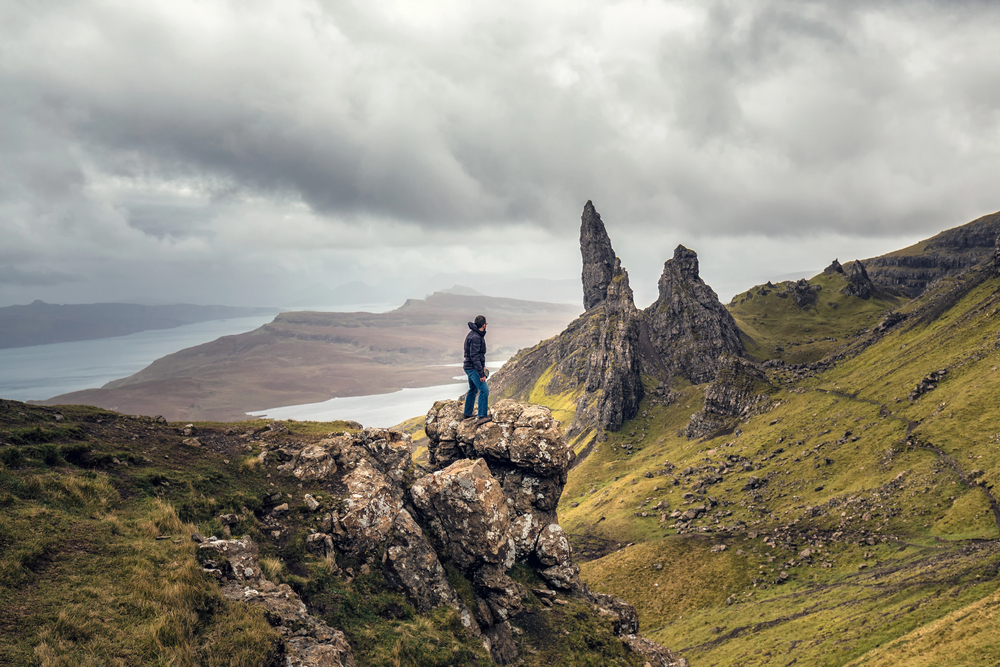
The Old Man of Storr stands like a 165-foot stone giant that decided to break away from the rest of the cliff and go solo. This ancient rock formation, created by an enormous landslide thousands of years ago, has become one of Scotland’s most photographed landmarks — and for good reason. The hike to reach this geological wonder takes about 45 minutes on a well-maintained path, though the Scottish weather can turn those 45 minutes into an adventure worthy of its own story. Once you reach the viewing area, you’ll understand why this spot has doubled for alien planets in movies and why photographers camp out here waiting for the perfect light.
Fairy Pools
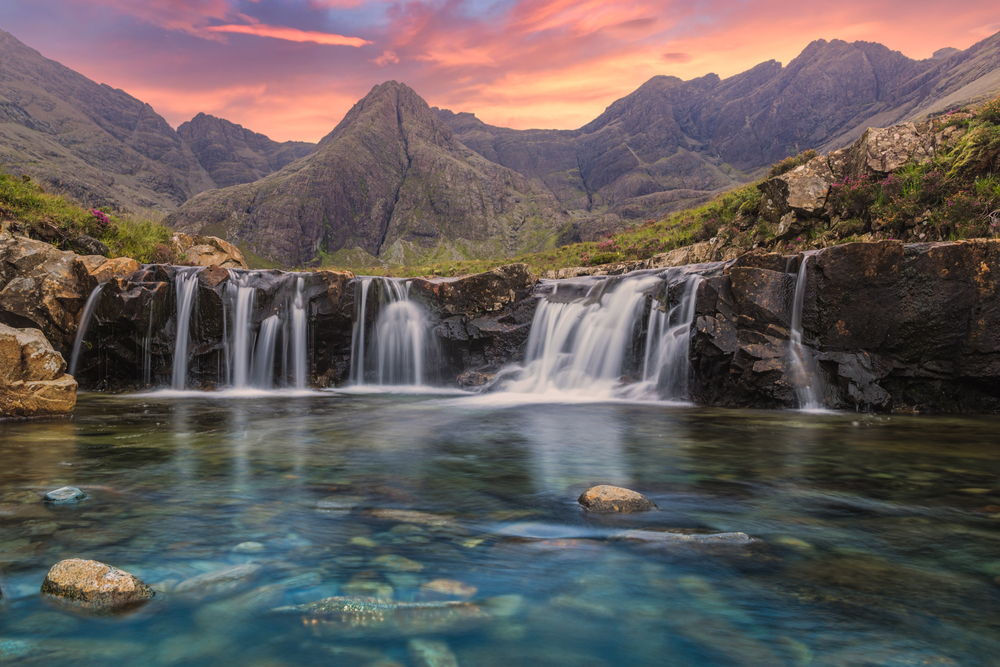
These crystal-clear mountain pools look like something straight out of a fantasy novel, complete with waterfalls cascading down from the Cuillin Mountains. The name isn’t just tourist marketing — local folklore insists that fairies actually bathe in these waters, though you’re more likely to spot hardy Scottish hikers taking a very brief dip. The walk to the pools is relatively easy, about 2.5 miles round trip, following the River Brittle through some of the most pristine Highland scenery you’ll ever encounter. The water temperature hovers around ‘absolutely freezing’ year-round, but the sight of these turquoise pools against the dark mountain backdrop is worth every shiver.
Dunvegan Castle
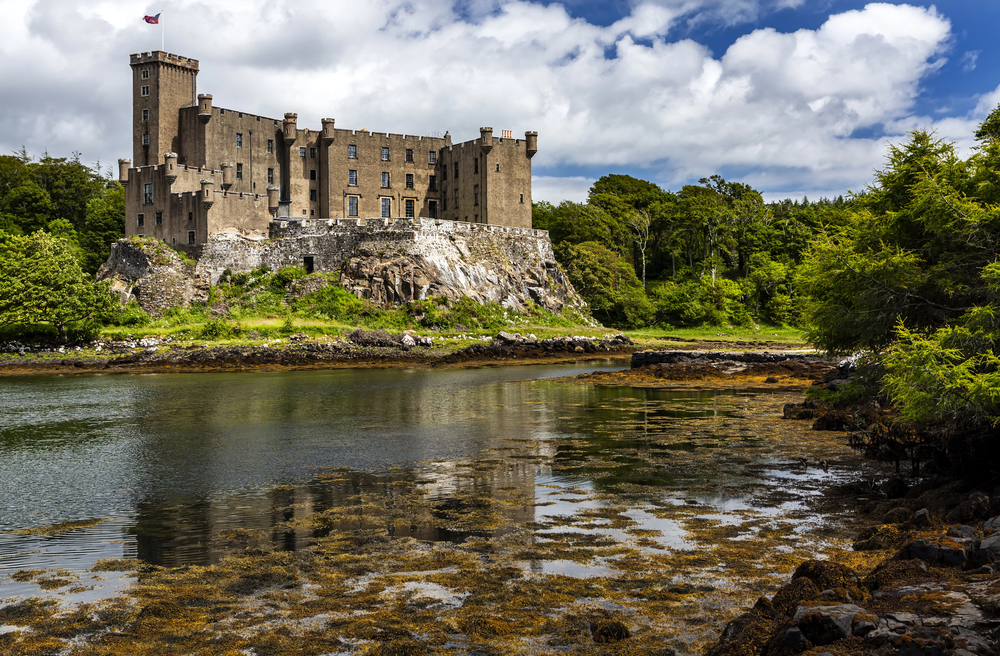
Dunvegan Castle holds the impressive title of Scotland’s longest continuously inhabited castle, with the MacLeod clan calling it home for over 800 years. This isn’t some crumbling ruin you peer at from behind ropes — it’s a living piece of history where you can actually walk through rooms that have hosted everyone from Bonnie Prince Charlie to modern-day wedding parties. The castle’s treasures include the Fairy Flag, a piece of silk that legend claims can save the clan from defeat in battle, though it can only be used three times and they’ve already used it twice. The gardens surrounding the castle are equally impressive, featuring everything from exotic plants to a restored 18th-century walled garden that produces vegetables tough enough to survive Scottish winters.
Talisker Distillery

Talisker Distillery proves that some of the world’s finest whisky comes from places where the wind could knock you over and the nearest neighbor might be a sheep. This distillery, the only one on the Isle of Skye, has been producing its distinctively peaty, maritime whisky since 1830 in a setting that’s as dramatic as the drink itself. The tours here aren’t just about sampling whisky — though that’s definitely a highlight — they’re about understanding how the island’s wild environment shapes every drop. The distillery sits right on the shore of Loch Harport, where the salty air and peat smoke combine to create a whisky that tastes like Skye itself.
Quiraing
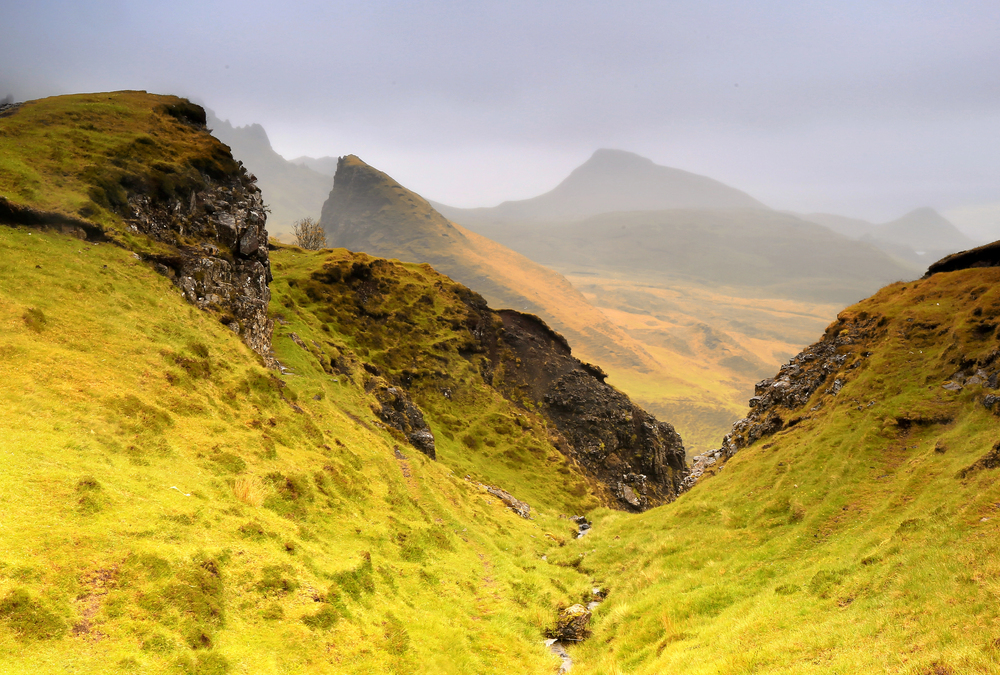
The Quiraing represents what happens when massive chunks of mountainside decide to shift around and create one of the most otherworldly landscapes in Scotland. This ancient landslip has left behind a series of rocky pinnacles, hidden plateaus, and winding paths that make you feel like you’re walking through Middle Earth. The circular hike takes about 2 hours and rewards you with views that have served as backdrops for countless movies, including some major Hollywood productions that needed an alien planet setting. The terrain changes constantly as you walk, from grassy meadows to rocky scrambles, keeping the journey interesting even when the Scottish mist rolls in and reduces visibility to about 10 feet.
Portree
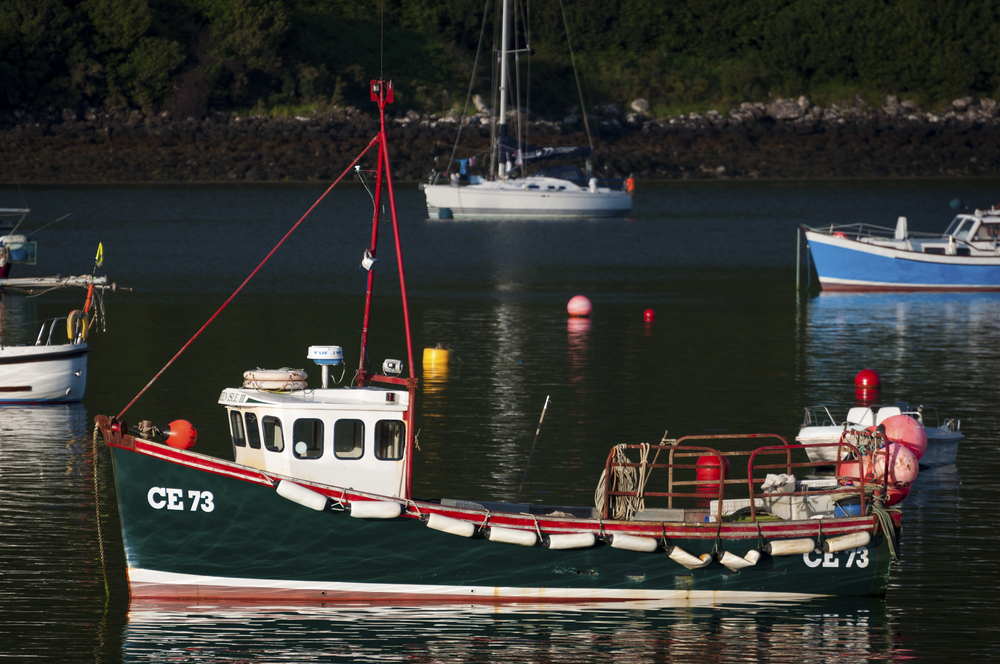
— Photo by tiagofernandez
Portree serves as Skye’s colorful capital, where a harbor full of fishing boats sits surrounded by houses painted in shades that somehow manage to look cheerful even under gray Scottish skies. This charming town of about 2,500 people functions as the island’s main hub, offering everything from traditional Scottish pubs to shops selling everything you need for Highland adventures. The harbor area, with its distinctive row of brightly painted buildings, has become one of Scotland’s most photographed spots, though it’s equally beautiful on a foggy morning when the colors emerge from the mist like a watercolor painting. Portree also serves as your base camp for exploring the rest of the island, with most major attractions within an hour’s drive.
Eilean Donan Castle
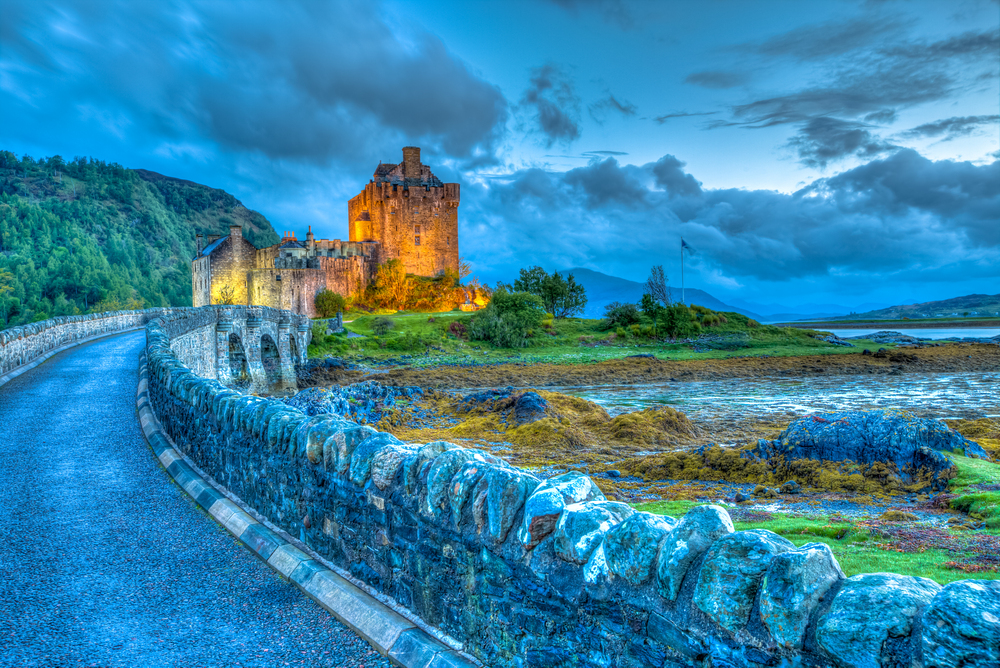
Eilean Donan Castle sits on a tiny island connected to the mainland by a stone bridge, looking exactly like what a Scottish castle should look like if you designed one from scratch. This 13th-century fortress has appeared in more movies than most Hollywood actors, including ‘Highlander’ and several James Bond films, earning it the title of Scotland’s most photographed castle. The castle’s dramatic setting, surrounded by three sea lochs with mountains rising behind it, creates picture-perfect views from almost every angle. Inside, you’ll find restored rooms filled with clan artifacts, weaponry, and exhibits that tell the story of the MacRae clan and their centuries-long connection to this remarkable fortress.
Kilt Rock and Mealt Falls
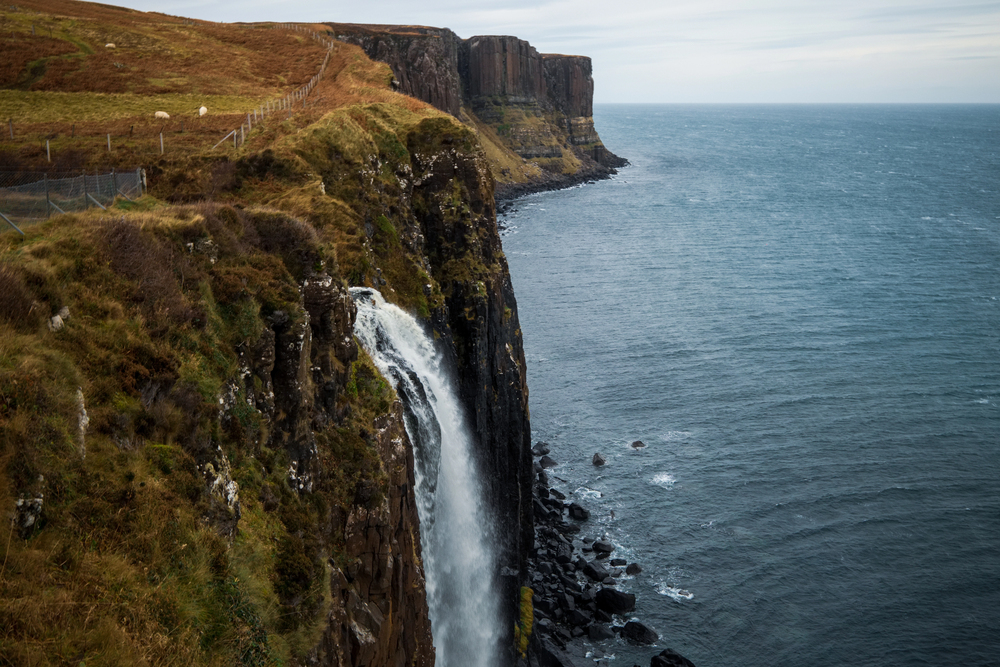
Kilt Rock earned its name from the vertical basalt columns that look remarkably like the pleats in a traditional Scottish kilt — assuming kilts were made of 200-foot-tall rock formations. The adjoining Mealt Falls plunges dramatically into the sea, creating a spectacle that’s especially impressive after heavy rain when the waterfall really shows off. This spot requires minimal hiking — just a short walk from the car park — but delivers maximum impact, making it perfect for visitors who want spectacular views without working up a Highland sweat. The viewing platform provides safe vantage points for photography, though the wind can be strong enough to make you question your decision to wear a hat.
Neist Point Lighthouse
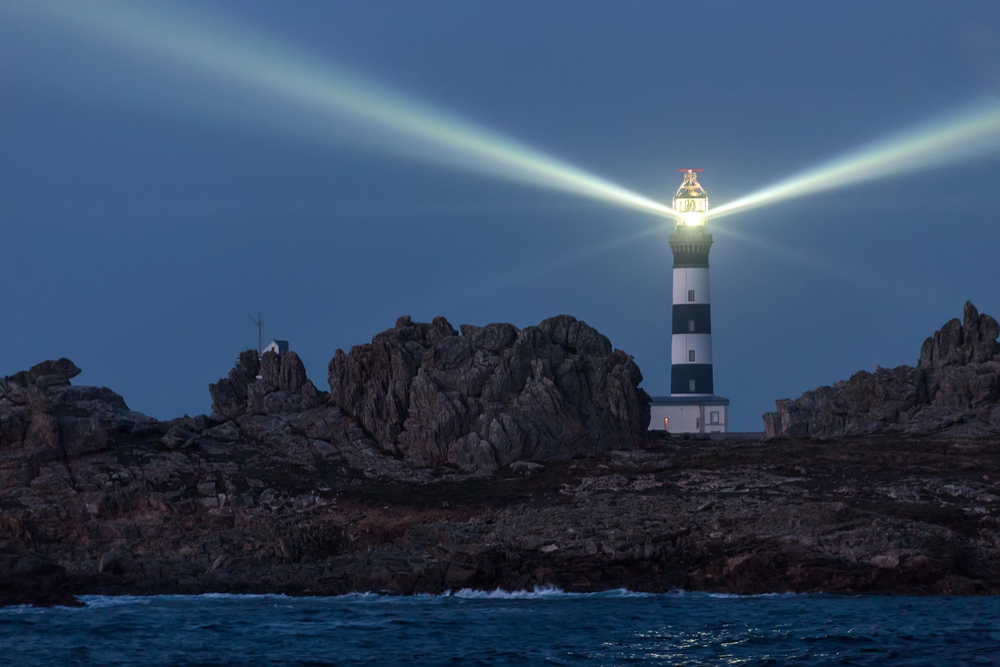
Neist Point Lighthouse stands at the westernmost tip of Skye, where the island literally runs out of land and crashes into the Atlantic Ocean. The lighthouse itself, built in 1909, continues to guide ships through some of Scotland’s most challenging waters, though these days it’s automated and doesn’t require a lighthouse keeper to brave the elements. The walk to reach the lighthouse involves a moderately challenging hike down a cliff path that rewards you with views of sea stacks, crashing waves, and on clear days, the distant Outer Hebrides. This spot is particularly magical at sunset when the lighthouse beam begins its nightly dance across waters that stretch uninterrupted to North America.
Coral Beach
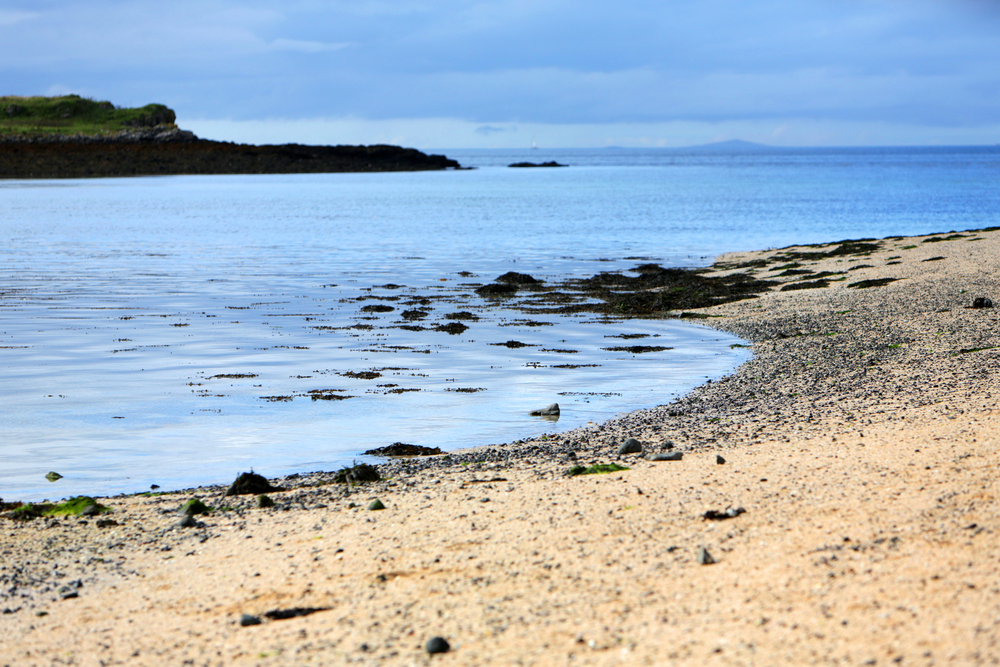
Coral Beach sounds like it belongs in the Caribbean, but this unusual stretch of coastline near Dunvegan consists of crushed coral and white shells rather than tropical sand. The ‘coral’ isn’t actually coral at all — it’s the remains of a type of red algae called maerl that creates this unexpectedly bright beach against the dark Scottish landscape. The contrast between the white beach, turquoise water, and black rocks creates a scene that looks Photoshopped, especially when the sun breaks through the clouds. The beach requires a pleasant 20-minute walk through farmland to reach, and while the water is definitely not Caribbean temperature, the unique beauty makes it worth the visit.
Staffin Dinosaur Museum
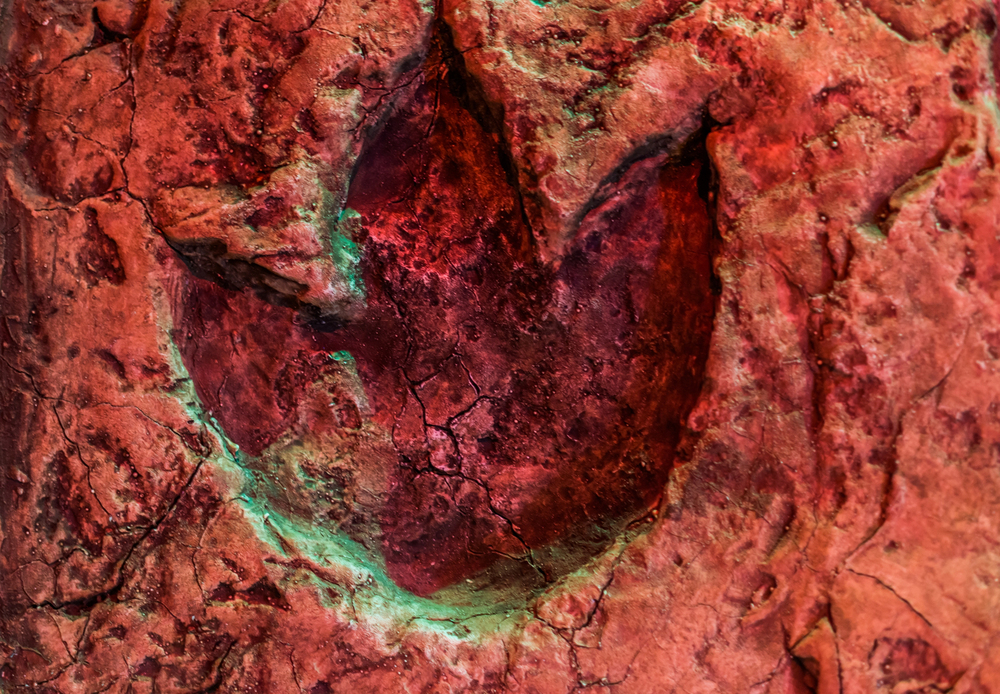
The Staffin Dinosaur Museum proves that Skye wasn’t always the domain of Highland cattle and sheep — 165 million years ago, this island was stomping ground for various dinosaur species. This small but fascinating museum showcases fossils found right here on Skye, including footprints and bone fragments that tell the story of when this area was a warm, subtropical lagoon. The museum’s location in a converted building in the village of Staffin makes it feel like a hidden gem, and the enthusiastic staff can point you toward nearby locations where you might spot dinosaur tracks embedded in the rocky shoreline. It’s a perfect rainy-day activity that adds an unexpected prehistoric dimension to your Skye adventure.
Armadale Castle and Gardens
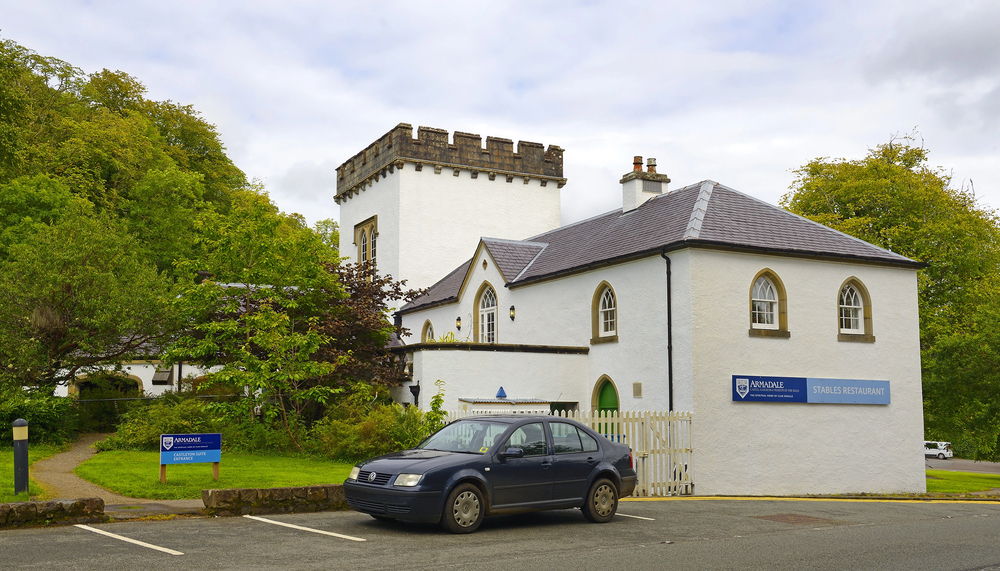
— Photo by Pecold
Armadale Castle represents the romantic ruin side of Scottish history, where ivy-covered walls and missing roofs somehow make the past feel more present than perfectly preserved buildings. The ruins sit within 40 acres of spectacular gardens that showcase plants from around the world, many of which thrive in Skye’s mild but unpredictable climate. The Museum of the Isles, housed in a modern building on the grounds, tells the story of the Lords of the Isles and their influence over this part of Scotland for centuries. The combination of historical ruins, international gardens, and stunning views across the Sound of Sleat to the mainland creates a perfect afternoon adventure.
Trotternish Ridge
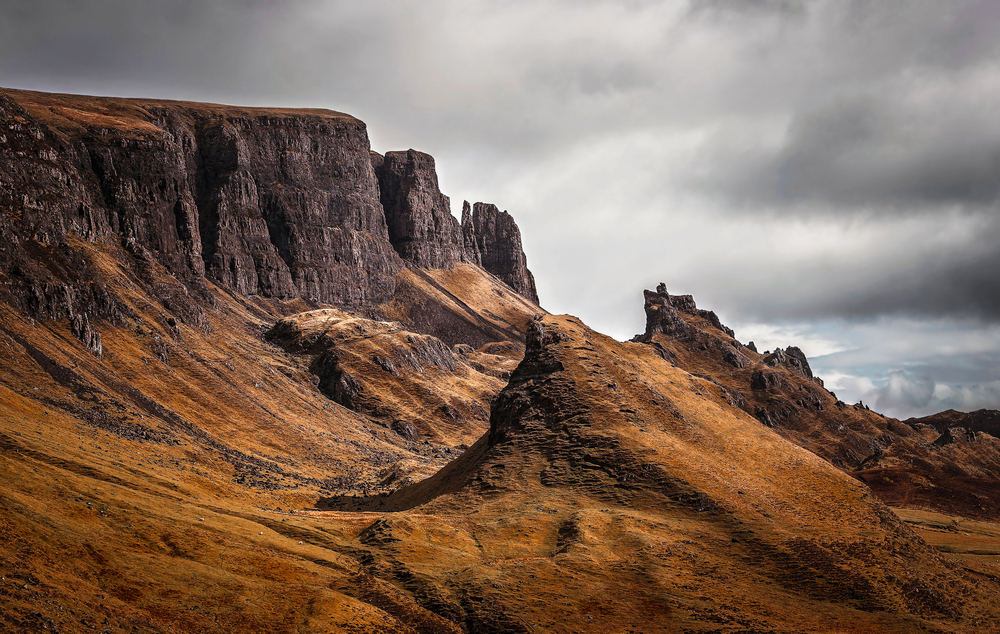
The Trotternish Ridge represents the backbone of northern Skye, a 20-mile-long escarpment created by one of Britain’s largest landslides. This dramatic geological feature includes several famous landmarks like the Old Man of Storr and the Quiraing, but the ridge itself offers some of the most spectacular driving in Scotland. The single-track road that follows the ridge provides constantly changing views of sea, mountains, and bizarre rock formations that look like they were designed by a committee of mad geologists. The entire loop can be driven in a few hours, but plan for frequent stops because every turn reveals another photo opportunity that’ll make your friends back home extremely jealous.
Skye Museum of Island Life
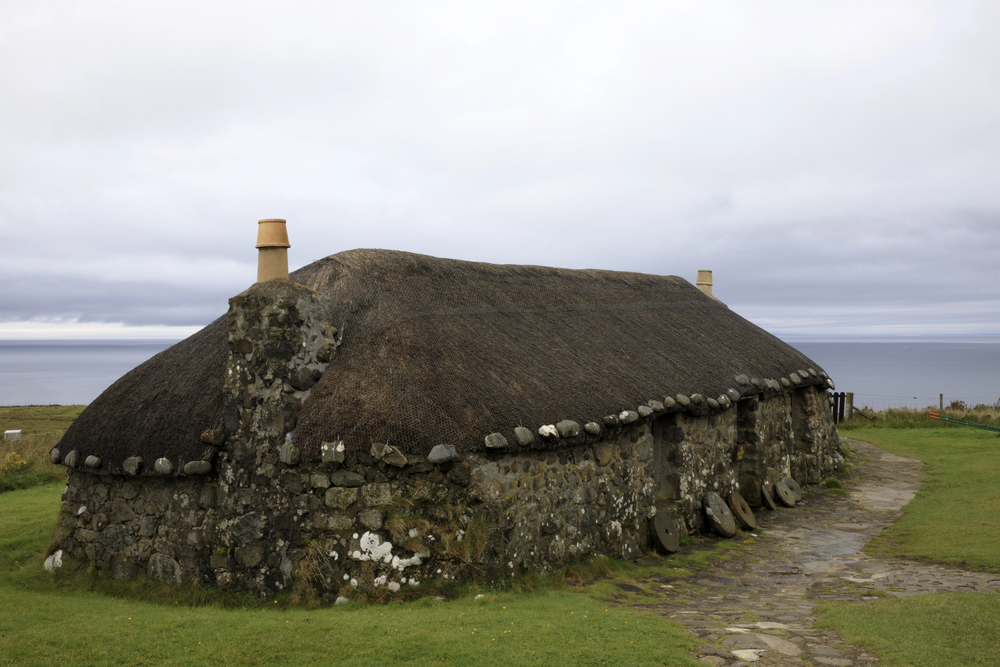
The Skye Museum of Island Life preserves a collection of traditional thatched cottages that show how ordinary people lived on the island before modern conveniences arrived. These authentic 19th-century buildings, complete with original furnishings and tools, demonstrate the harsh realities and simple pleasures of Highland life when survival depended on hard work and community cooperation. The museum’s location near the northern tip of the island provides a peaceful setting where you can imagine what life was like when the biggest excitement might be a visit from a traveling merchant or news from the mainland. The adjacent graveyard contains the grave of Flora MacDonald, the Highland heroine who helped Bonnie Prince Charlie escape after the Battle of Culloden.
Camasunary Bay
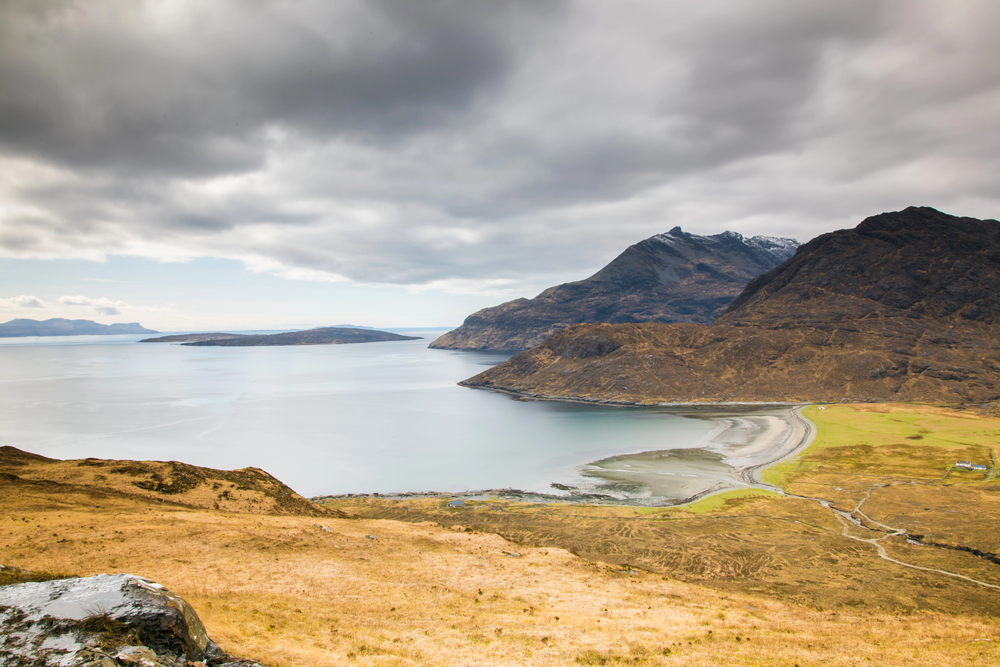
Camasunary Bay offers one of Skye’s most pristine beaches experiences, accessible only by a moderate hike that keeps the crowds away and the sense of discovery intact. This remote bay, surrounded by the dramatic peaks of the Cuillin Mountains, provides a perfect example of why Skye’s coastline is considered some of Scotland’s finest. The beach itself consists of smooth pebbles and coarse sand, backed by machair grassland that explodes with wildflowers in summer. The hike to reach Camasunary takes about 45 minutes each way through some of the most beautiful Highland scenery you’ll encounter, and the reward is a beach that often feels like your own private slice of Scottish paradise.
Dunscaith Castle
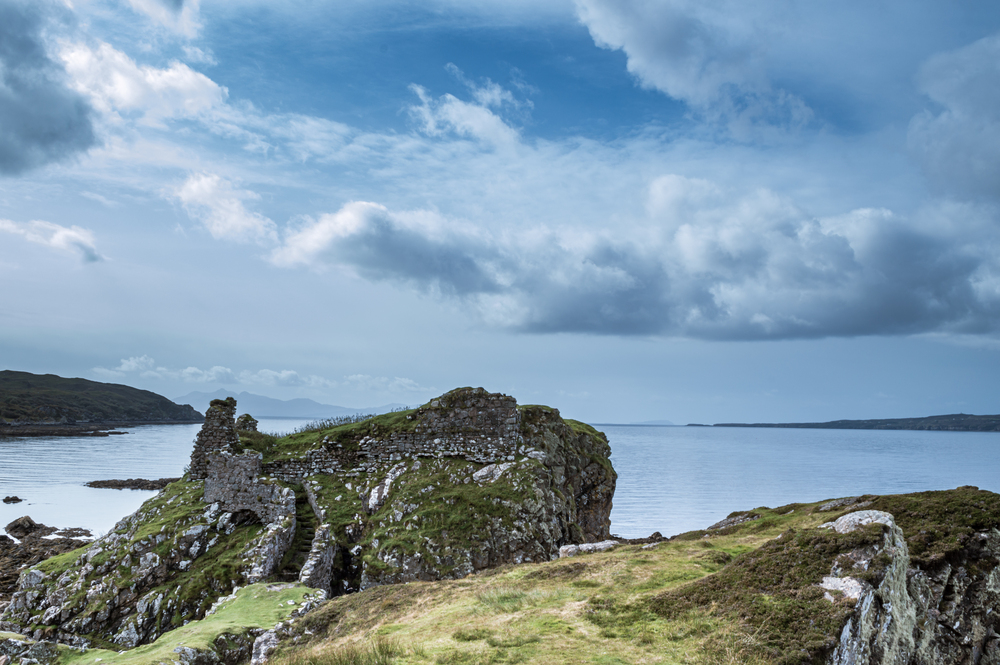
Dunscaith Castle ruins perch dramatically on a rocky outcrop, accessible only by a somewhat adventurous scramble that adds an element of genuine exploration to your castle visit. This medieval fortress, dating from the 14th century, was once a stronghold of Clan MacDonald and features in numerous Highland legends, including stories of warrior training and ancient battles. The castle’s location on a small peninsula means you’re surrounded by water on three sides, creating views that are both beautiful and slightly vertigo-inducing. Unlike some of Scotland’s more famous castles, Dunscaith feels truly wild and untamed, where you can explore the ruins without crowds and imagine what life was like for the Highland warriors who once called this fortress home.
A Living Highland Legacy
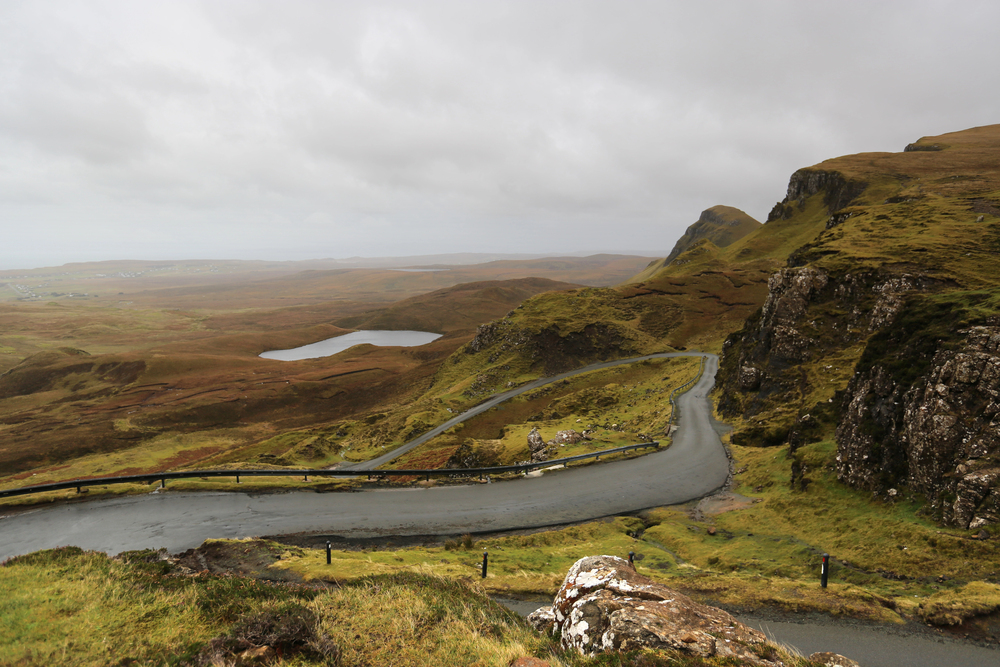
The Isle of Skye continues to evolve while maintaining its essential character, much like the Highland communities that have shaped it for centuries. Modern visitors follow ancient pathways created by cattle drovers and clan warriors, experiencing landscapes that have inspired poets, artists, and adventurers for generations. The island’s ability to balance preservation with progress ensures that future travelers will discover the same dramatic beauty and cultural richness that make Skye special today. Whether you spend a weekend or a week exploring these diverse attractions, you’ll leave with stories, photographs, and memories that capture the essence of this remarkable Scottish island.
More from Travel Pug

- 20 Best Beach Towns in the Carolinas
- 13 Destinations Where Tourists Regularly Regret Their Trip
- 20 Things You Actually Get in First Class
- 20 Small Airports With Aviation Museums
- 20 Places in the U.S. That Are Perfect for a Reset Trip
Like Travel Pug’s content? Follow us on MSN.
